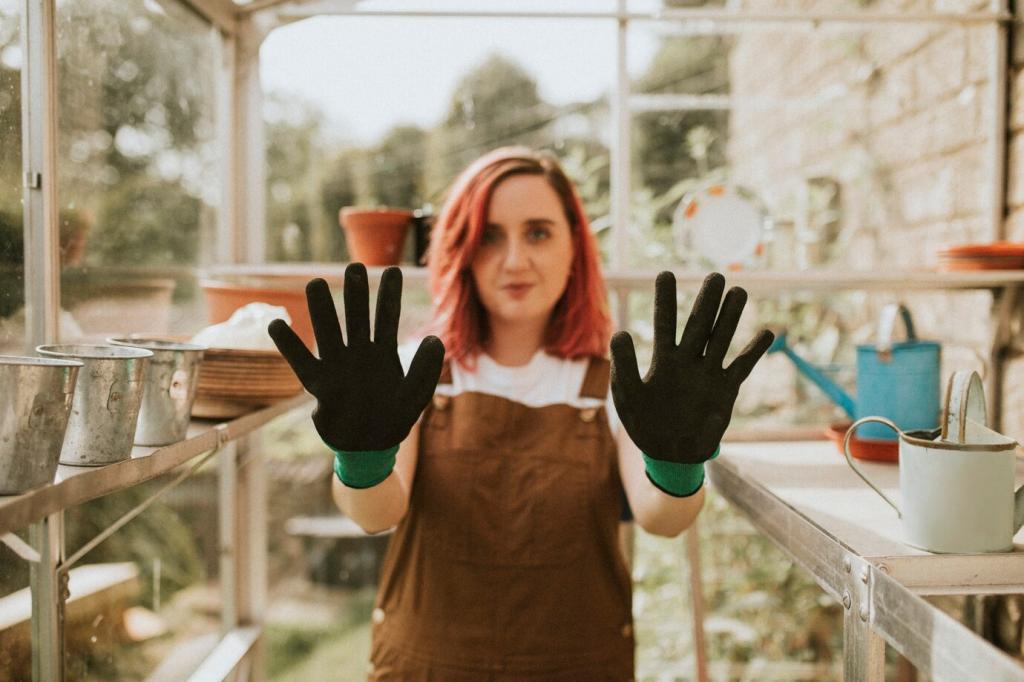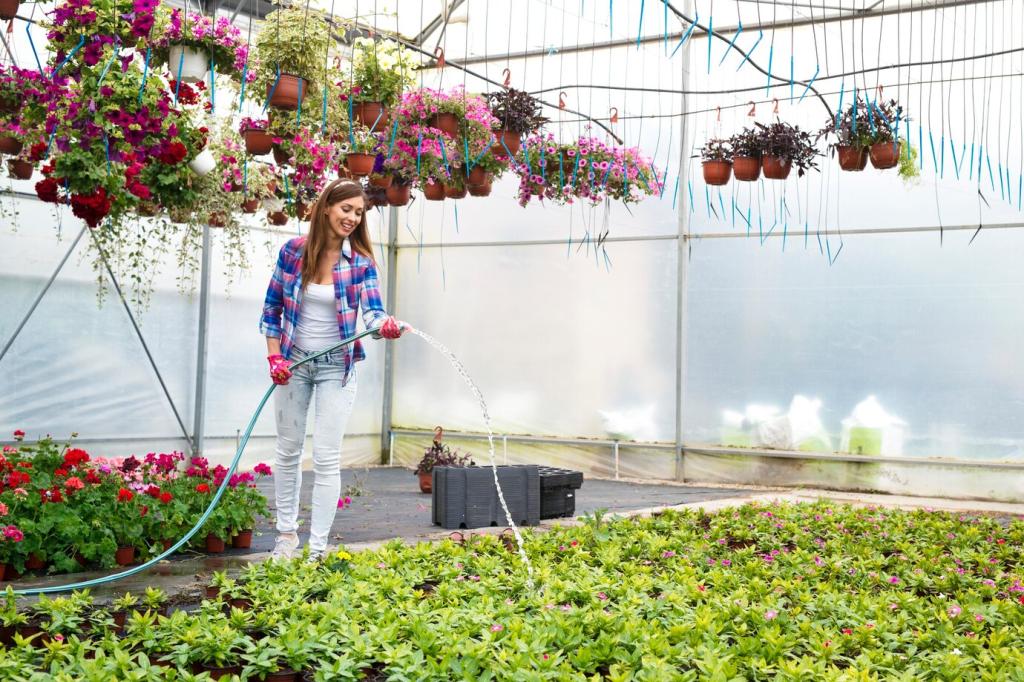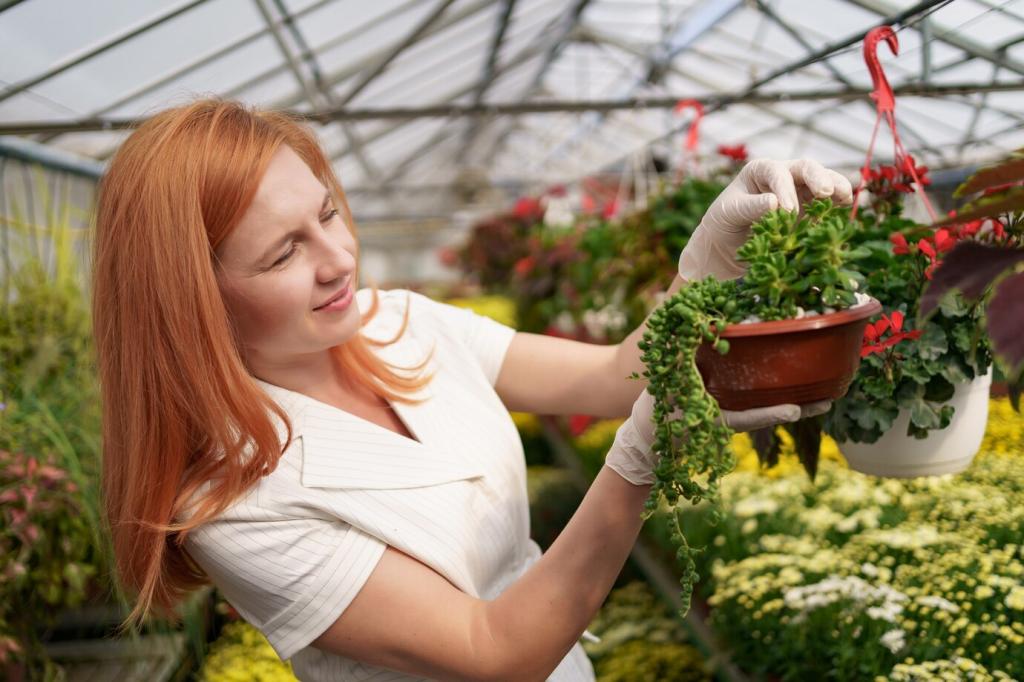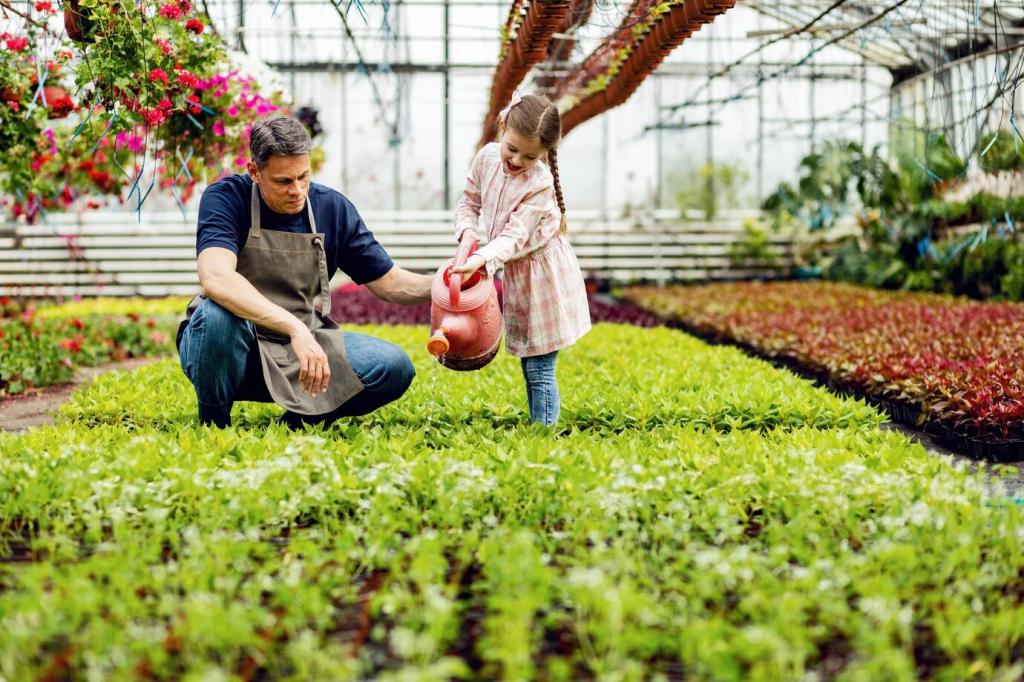
Container Gardening: Creative Solutions for Small Urban Areas
Container gardening transforms even the smallest urban spaces into lush, thriving retreats. Perfect for city dwellers with limited outdoor access, this form of gardening uses innovative techniques to maximize greenery while embracing the unique challenges of apartments, balconies, and rooftops. Discover how you can cultivate beauty, flavor, and serenity with strategic container choices and clever design, regardless of your available space.
Maximizing Space in Urban Settings
Vertical Gardening: Going Upwards Instead of Outwards
Vertical gardening harnesses the power of upward growth, allowing you to fit more plants into tighter areas. By using trellises, wall-mounted planters, and hanging pots, you transform blank walls or unused airspace into lively showcases of greenery and blooms. This approach is particularly valuable in apartments or homes with little to no ground space, offering both a visual and spatial solution. In addition to saving space, vertical gardening can create privacy screens, soften harsh building lines, and even improve air quality. With careful plant selection—such as vining tomatoes, herbs, or climbing flowers—city dwellers can enjoy a wide variety of plants typically reserved for larger gardens. Vertical structures can be DIY projects or store-bought, and their adaptability makes them ideal for ever-changing urban environments.
Innovative Use of Balconies and Windowsills
Balconies and windowsills are valuable real estate for urban gardeners. Even with limited square footage, these areas receive ample sunlight and ventilation perfect for container gardening. Using stacking planters or railing-mounted containers maximizes the planting area. These solutions not only add beauty but also make efficient use of sunlight, which is often a limiting factor in urban spaces. Consider positioning your containers to optimize morning or afternoon light, and select plants that thrive in those specific conditions. Windowsill gardens are perfect for herbs, succulents, or compact flowers, while balconies can support larger pots for vegetables or small fruit trees. Thoughtful placement and regular rotation ensure even growth and can extend your growing season, allowing for a greener home year-round.
Multipurpose and Movable Container Solutions
One of container gardening’s greatest benefits is flexibility. Portable containers can be easily rearranged to refresh the look of your space, adapt to changing sunlight patterns, or protect plants during inclement weather. Modern planters come in various sizes and materials, with some even doubling as furniture or decor—think storage benches with built-in planter boxes or rolling carts filled with flowers and herbs. This adaptability is vital in urban areas where space serves multiple functions throughout the day. Moveable containers make seasonal plant swaps simple and allow for experimenting with new layouts. Whether you choose classic terra cotta or sleek, lightweight resin, the right container enhances mobility and supports plant health in small-scale gardening.
Materials and Drainage: Ensuring Plant Vitality
Container material affects everything from weight and durability to thermal regulation and appearance. Terra cotta, ceramic, plastic, and resin each have advantages and considerations. Terra cotta and ceramic add a classic feel but are heavier and may crack in cold climates, while plastic and resin offer lightweight, weather-resistant alternatives perfect for urban environments. Regardless of material, proper drainage is essential; containers must allow excess water to escape to prevent root rot and promote healthy growth. For city gardeners, self-watering planters or containers with built-in reservoirs offer peace of mind and help keep plants hydrated during busy urban schedules. Thoughtfully choosing the right materials and ensuring effective drainage pave the way for a lush, thriving garden.
Size Matters: Matching Plants to Containers
Not all plants thrive in the same size containers. Herbs, succulents, and annual flowers do well in smaller pots, making them ideal for windowsills or confined corners. In contrast, vegetables or small fruit trees need more space for root development and stability, requiring larger, deeper containers. Matching the container size to the plant’s growth potential is key to healthy, productive gardening. In a small urban setting, it pays to research your plants’ root systems and select containers that provide sufficient space without overwhelming your available area. Overcrowding leads to competition for nutrients and water, while undersized containers restrict growth. By understanding your plants’ specific needs, you create an environment that encourages lush foliage and bountiful harvests within a limited footprint.
Aesthetics and Practicality: Blending Style with Function
Urban gardens often double as extensions of indoor living spaces, so container aesthetics play a significant role. Coordinated color schemes, unique shapes, and decorative finishes can enhance the visual impact and complement your personal style. However, beauty should not come at the expense of practicality. Consider accessibility, weight for moving, and compatibility with existing architecture when choosing containers. Additionally, many urban gardeners repurpose everyday objects—such as crates, buckets, or vintage tins—as quirky, cost-effective planters that inject personality and sustainability into their designs. Striking a balance between visual appeal and functionality ensures your container garden is both a pleasure to behold and a joy to maintain year-round.
Previous slide
Next slide

Herbs and Greens: Small Space Superstars
Herbs and leafy greens are perfect candidates for container gardens, thriving in small spaces and relatively shallow pots. Basil, mint, parsley, and chives are not only easy to grow but also continually harvestable, making them indispensable for home cooks in urban environments. Lettuces, spinach, and arugula likewise flourish in window boxes or railing planters, offering fresh, nutritious greens just steps from your kitchen. These plants have compact root systems and are forgiving of limited space, allowing you to create a productive mini farm on a balcony, patio, or sunny windowsill. Regular harvesting encourages new growth, and the ability to control soil and moisture levels in containers reduces the risk of pests and diseases, ensuring you enjoy healthy, abundant harvests throughout the year.

Compact Vegetables and Fruits for Containers
Many vegetables and even some fruits are surprisingly well-suited for container life. Cherry tomatoes, bush beans, peppers, and radishes can all prosper in city gardens, delivering impressive yields from modestly sized pots. For those with a bit more room, dwarf fruit trees—such as lemons, apples, or figs—can be grown in larger containers, adding both beauty and bounty to your urban retreat. Container gardening allows you to tailor soil types and nutrition to each plant, optimizing their performance in a way that is more challenging in the open ground. Choosing compact or “patio” varieties bred for small spaces further enhances success. With attentive care, strategic feeding, and proper staking, you can enjoy fresh produce without the need for traditional garden beds or allotments.

Year-Round Edible Gardening: Extending the Harvest
The flexibility of container gardening makes it easier to extend your growing season and enjoy fresh edibles year-round. By moving containers indoors during cold snaps or utilizing cold frames and mini-greenhouses on balconies, urban gardeners can keep herbs and certain hardy greens flourishing through the winter months. In summer, optimizing sun exposure or providing shade as needed enables sensitive plants to survive heat waves. Additionally, containers warm up more quickly in spring than open soil, allowing for earlier planting and harvests. Succession planting—growing new crops as others finish—ensures continuous production from limited space. Whether you’re craving fresh basil in January or early strawberries in April, container gardening in the city makes year-round abundance both achievable and rewarding.
